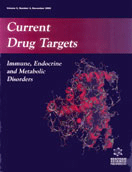Abstract
G protein coupled receptors or serpentine receptors work as signalling switches that turn extracellular signals into activation of multiple molecules at the intracellular face of the plasma membrane. Serpentine receptors are the targets of around 70 percent of all current drugs in clinical medicine. We suggest that these receptors can be pharmacologically targeted by modification of their unique internal inhibitors the G protein coupled receptor kinases (GRKs). The GRKs constitute a family of serine / threonine kinases that specifically bind to and phosphorylate agonist-activated serpentine receptors. The phosphorylated receptors are recognized by arrestins that bind to the receptor and uncouple them from attached G proteins thereby terminating G protein signalling. This review focuses on a ubiquitously expressed GRK family member dubbed GRK2 (previously called beta-adrenergic receptor kinase 1) that regulates cellular signalling at multiple levels. In Gq-coupled signalling modules GRK2 may function as a feedback inhibitor molecule that monitors, inhibits and re-directs the information flow. GRK2 acts as a negative feedback protein by interacting with at least six key signalling molecules in the Gq pathway including receptors, free G beta gama subunits, activated G alpha q subunits, phosphatidylinositol-4, 5-bisphosphate (PIP2), protein kinase C (PKC) and calmodulin (CaM). GRK signalling is important for immune, endocrine an d cardiovascular function manifesting itself in disorders such as heart failure and lymphocyte activation especially in chronic inflammation. This review summarizes the advances made in understanding the many actions of GRKs and addresses their potential as novel therapeutic targets.
Keywords: G Protein-Coupled Receptor Kinase, G protein, phosphatidylinositol-4, 5-bisphosphate (PIP2), protein kinase C (PKC), calmodulin (CaM), b2-adrenergic receptor kinase 1(GRK2), GRK2 Co-Activators, ERK2, ERK1
 2
2


















